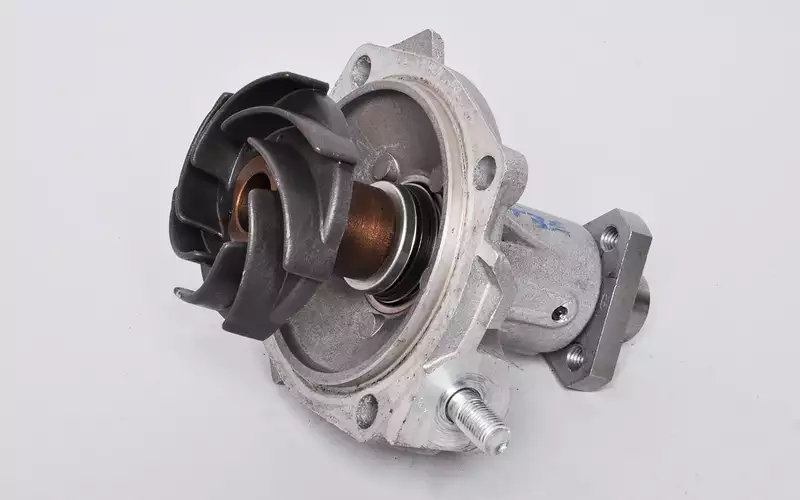The serial 1.7 liter engine appeared on the Niva car in 1993. And since 2002, a modernized engine with an index of 21214, equipped with a fuel injection system, has been installed on the Chevrolet Niva. And today it can be seen under the hoods of the Lada Niva Travel and Lada Niva Legend models.
But owners of both new and well-traveled Nivs face the same issues.
Maintenance of many parts of the VAZ-21214 engine in the engine compartment of the Niva is difficult.
1. Insufficient Power
With a working volume of 1690 cm³, the engine produces only 81 hp. The well-known (for example, according to the Skoda Octavia liftback) Volkswagen eight-valve AKL with a capacity of 1.6 liters, developed at the end of the last century, developed 100-101 horsepower in various versions. And this 20 hp. and 20 Nm of torque is just not enough for domestic SUVs.
A weak motor often has to be cranked and loaded to its limits, which reduces the resource.
2. Tendency to Overheat
There are several reasons for overheating of the VAZ-21214 engine. The radiator is cooled by electric fans. The reliability of both the electric motors themselves and their electrical circuits is insufficient, especially when the car is older than 8 years.

Often, motor overheating is caused by a faulty thermostat, which is stuck in the closed state. Its resource is sometimes 80 thousand kilometers short.
Short-lived and pumping the cooling system. Their plastic impellers often fall apart and the pump stops driving antifreeze through the system. Another reason for malfunctions is that the impeller starts to rotate on the shaft.

Problems with clogged radiators and pump failure are aggravated by the fact that the owners do not change the coolant according to the regulations or fill low-quality antifreeze.
Blockage of the radiator cells from the outside can also lead to overheating. This happens after forcing deep puddles, when a dense frozen crust forms on the hot surface of the radiator, completely stopping the airflow.
3. Maslozhor
Oil consumption, almost imperceptible at the beginning of engine operation, increases over time. This is due to the aging of the valve stem seals.
The second reason for the oil burner is a large amount of crankcase gases that the primitive oil separation system cannot handle.
The third reason is the gradually increasing, as the piston rings wear, the ingress of oil into the combustion chamber along the cylinder walls.
4. Oil Leakage
Usually the rear crankshaft oil seal loses its tightness. And it is difficult to change it – you must first disassemble the gearbox, clutch and flywheel.
The Niva engine with hydraulic compensators in the valve drive therefore does not (theoretically!) have to open the valve cover often. But leaks through the gasket often make this operation.
5. Unreliable timing drive
The hydraulic tensioner eventually only starts working a few seconds after the engine has started. And at this point the chain rumbles: it not only “knocks”, but also contributes to the accelerated wear of the mating parts (damper, tension shoe and the chain itself). That’s why some owners are switching to older mechanical tensioners. Largely for this reason, the resource of a single-row chain (weaker than previous VAZ engines) rarely exceeds 100 thousand kilometers.

Another weak point in the timing drive is the hydraulic bearings. Insufficient quality manufacturing of precision pairs will either lead to seizing or insufficient tautness and tensile strength under load. Hydro bearings are also deformed when mounted in the head of the block with excessive tightening. Therefore, some motorists have abandoned them in favor of the old mechanical armrests that can be adjusted manually.
The latest versions of engines were equipped with hydraulic INA bearings. They are really reliable. It is a pity that the thread has changed, along which the hydraulic support is screwed into the body of the block head. Therefore, new nodes are not interchangeable with old ones.
6. High noise level
Large gaps in many working pairs are the reason for the rather noisy operation of the unit as a whole. The design of the intake and exhaust ducts was not particularly carefully tuned to reduce noise levels. Auxiliary units also contribute.
Although even in modern Niva almost everything is noisy. And the engine is far from the main source of noise.
7. Insufficient Motor Resource
A rare 21214 engine can work more than 150,000 km without major repairs. Such and even smaller resource has always been typical of Zhiguli engines. SUVs are taxed more heavily, but there are no fundamental engine improvements.
Although in highway mode, some engines provide up to a shot of 200 thousand kilometers or more.

Why does it break?
In general, there are no completely failed places in the design of this engine. But rarely, with runs up to 100 thousand km, one or even several of the above errors do not come from one or even several of the owners. The causes of malfunctions have long been known: the unstable finish of both the engine itself and its components. And everyone has agreed to that.
- “Behind the wheel” can also be read on VKontakte.
Photo: AVTOVAZ and “Behind the wheel”
They are not only hidden in the design, but also as components. And since this engine is installed on all-wheel drive AVTOVAZ models, weaknesses are felt even in short runs.

Source: Z R





